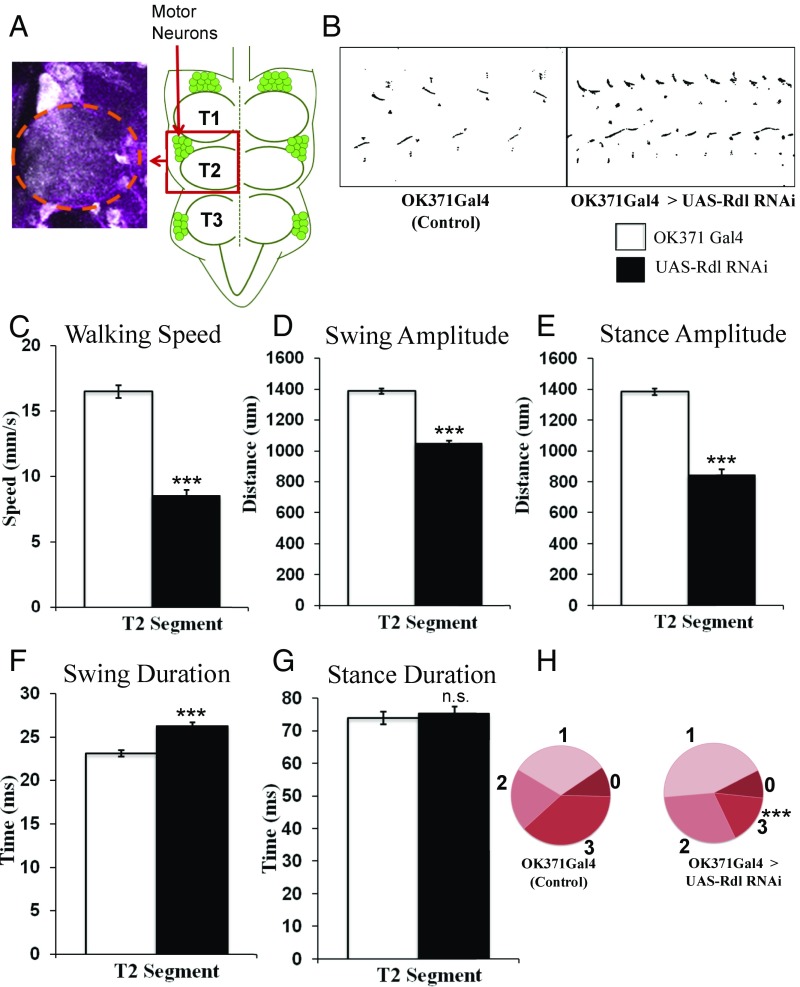Fig. 4.
Targeted knockdown of Rdl provides evidence for GABAergic inhibitory input to motoneurons in walking flies. (A) The OK371-GAL4 driver targets UASmCD8GFP expression to leg motoneurons. Schematic representation of motoneuron cell bodies localized in the VNC (Right). Enlarged T2 hemineuromere region showing GFP marked motor neuron cell bodies and dendritic arborization (Left). Orange circled region indicates neuropile. (B) Rdl receptor knockdown using OK371 GAL4 in all leg motoneurons results in shorter step length as revealed by the soot imprints. (C) Rdl receptor knockdown using OK371 GAL4 in all leg motoneurons results in a significant decrease in walking speed. In this and all subsequent figures, the left bar indicates control and the right bar indicates knockdown. (D–F) Rdl receptor knockdown using OK371 GAL4 in all leg motoneurons results in reduced amplitudes of swing and stance and increased swing duration. (G) Stance duration is unaffected. (H) Concurrency state 3 is significantly decreased by Rdl receptor knockdown. Left circle, control; right circle, knockdown. Controls (Dicer2; OK371 Gal4 > UAS-mCD8GFP) n = 76; experiment (Dicer2; OK371 Gal4 > UAS-Rdl RNAi) n = 68. n.s., not significant. Quantitative analysis for the entire bar plots was performed using Student’s t test. All of the bar represents mean ± SEM (***P ≤ 0.001). Quantitative analysis for the pie chart was performed using two-way repeated measures (RM)-ANOVA and showed significant difference in the concurrency state 3 of OK371 Gal4-driven Rdl knockdown flies, F(3, 426) = 276, P < 0.001. Post hoc testing using Sidak multicomparison test showed a significant difference in concurrency state 3 of Rdl receptor knockdown flies compared with OK371 Gal4 control flies (***P < 0.001).

